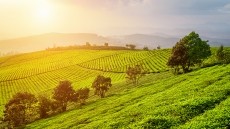Scientists search for ‘mystery’ banana ancestors to future-proof sector

Banana breeders are currently racing to find ways to combat pathogens like Panama disease and Fusarium wilt. These threaten a global industry estimated to produce 100 billion bananas annually and be worth $8 billion.
Cavendish bananas make up around half of the bananas produced worldwide and are those mostly seen in European supermarkets. This variety is particularly vulnerable to disease because of its lack of genetic diversity.
In order to help find potential ways to strengthen crops against disease, experts at the Montpellier, France-based Alliance of Bioversity International and the International Center for Tropical Agriculture (CIAT) have therefore been investigating the complex banana ‘family tree’.
To identify their unique genetic fingerprints, the researchers sequenced the DNA in 226 leaf extracts. Their study, published in Frontiers in Plant Science, shows that today’s domesticated banana varieties are hybrids of different subspecies and contain traces of three extra, as yet unknown, ancestors.
There’s an urgent need to find these three ‘mystery ancestors’ of bananas in the wild, ‘before they go extinct’, the study wrote. “Our personal conviction is that they are still living somewhere in the wild, either poorly described by science or not described at all, in which case they are probably threatened,” said Dr Julie Sardos, a scientist at the Alliance of Bioversity International and CIAT, and the study’s first author, adding the team has a good idea where to look for them: “Our genetic comparisons show that the first of these mystery ancestors must have come from the region between the Gulf of Thailand and west of the South China Sea. The second, from the region between north Borneo and the Philippines. The third, from the island of New Guinea.”
Their discovery could help breed better bananas, added corresponding author Dr Mathieu Rouard, likewise at Bioversity International. “Identifying the ancestors of cultivated bananas is important, as it will help us understand the processes and the paths that shaped the banana diversity observed today, a crucial step to breed bananas of the future,” he said, adding. “Breeders need to understand the genetic make-up of today’s domesticated diploid bananas for their crosses between cultivars, and this study is a major first step toward the characterization in great detail of many of these cultivars.”
Speaking to FoodNavigator, the researchers stressed the study does not say that mystery ancestors will save bananas from extinction, but reports the presence of unknown contributors in some cultivated bananas and discuss their potential origins.
“It implies that if genome segments from these ancestors were conserved so long in cultivated bananas, they could have contributed with some valuable traits,” explained Dr Rouard, “but we don’t know which ones at this stage. So identifying them can open new perspectives for banana breeding but it is difficult to claim more.”
If these missing genomes are discovered “they will indeed open new perspectives for banana breeding and will help developing more efficient breeding strategies,” added Dr Sardos. “Research is on-going to discover the three ‘mystery ancestors’, if they still exist. With the advances of genomics and with the banana research community being very active, we hope to have answers to this crucial question rapidly but I have no idea when.”
The team also called for more diversity of bananas sold in Europe’s supermarkets to stave off the risk of extinction.
The banana industry is built on a ‘monocultural model’ meaning the entire value chain is based on Cavendish ‘biology and properties’, complained Dr Rouard. “Many other banana varieties exist in the tropical world but their potential for export is barely tested. European consumers also have a very clear idea of what a banana should look like and should taste like = Cavendish-look and Cavendish-taste. Therefore, if discovered, the ‘three mystery ancestors’ will help breed more resilient and tolerant banana varieties but the diversity of bananas available in European supermarkets will still depend of the choices that banana industry will make in the future.”





















